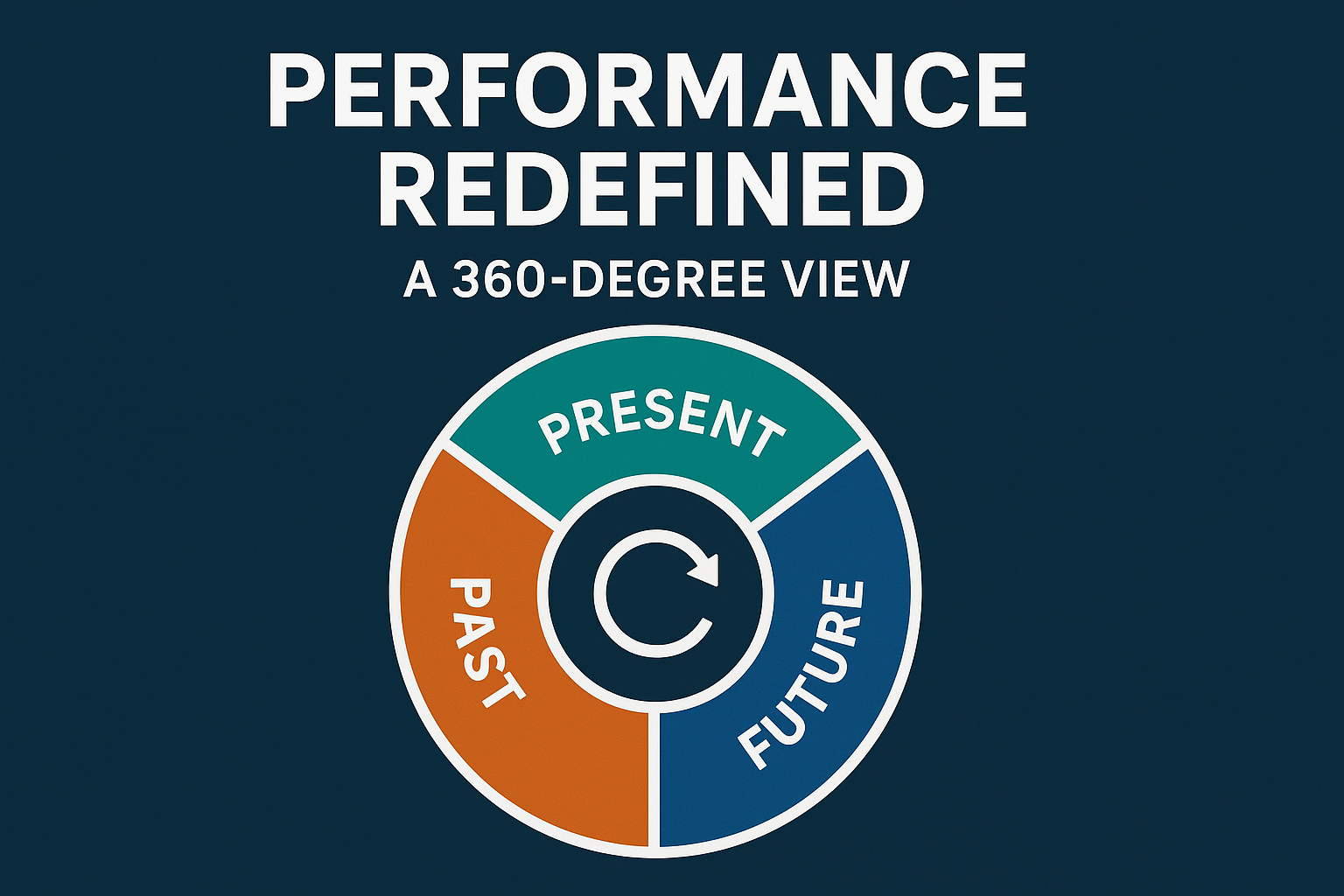For decades, the bedrock of performance management was the annual review. A retrospective glance, often a single, high-stakes conversation summarizing a year’s worth of work. While well-intentioned, this backward-looking model often felt like driving a car by only looking in the rearview mirror.
In today’s dynamic business environment, simply measuring the past is no longer enough. Forward-looking leaders understand that strategic performance management demands a 360-degree view, encompassing the past, optimizing the present, and anticipating the future.
The shift isn’t just a trend; it’s a necessity. Technology enables constant connection, markets pivot rapidly, and the talent landscape demands continuous growth. Our approach to performance must evolve to reflect this reality.
Performance: The Past (The Rearview Mirror)
The traditional annual review, while providing a formal record, suffers from inherent limitations:
- Recency Bias: Managers often remember recent events more vividly than those from months prior, leading to an incomplete or unfair assessment of the entire year.
- Lack of Agility: Feedback given once a year is too infrequent to address issues promptly or capitalize on real-time opportunities for improvement. It’s like waiting for the annual check-up to fix a leaky faucet.
- Focus on Evaluation, Not Development: The high stakes of compensation and promotion discussions often overshadow genuine developmental conversations, turning the review into a judgment, not a growth opportunity.
- Limited Data Points: Relying on a single, yearly interaction provides a narrow snapshot, missing the nuances of daily performance and team dynamics.
While historical data is valuable for identifying long-term trends and validating outcomes, leaders must recognize its limitations as the sole measure of performance. It provides what happened, but rarely why or what next.
Performance: The Present (The Real-Time Dashboard)
The heart of modern strategic performance management lies in the present—in continuous, real-time engagement. This is where performance becomes an ongoing dialogue, not an annual monologue.
- Continuous Feedback Loops: Regular, informal check-ins (weekly or bi-weekly) allow for timely recognition, course correction, and immediate problem-solving. This makes feedback a natural part of daily work, not a dreaded event.
- Focus on Coaching and Development: Managers become coaches, guiding employees through challenges, helping them develop new skills (especially those “power skills” we discussed in the previous series!), and fostering self-awareness. This shifts the focus from judging past performance to building future capability.
- Agile Goal Setting: Goals aren’t static for a year. They’re regularly reviewed, adjusted, and aligned with evolving business priorities. This ensures that individual efforts always contribute to the organization’s most critical objectives.
- 360-Degree Insights (Beyond the Manager): Leveraging input from peers, direct reports, and cross-functional collaborators provides a richer, more holistic view of an individual’s impact, capturing insights a single manager might miss. This real-time, multi-directional feedback offers a more accurate “present” picture.
- Technology as an Enabler: Modern HR tech platforms facilitate continuous feedback, goal tracking, and recognition, making real-time performance management scalable and accessible.
This focus on the present ensures that performance is a living, breathing aspect of the organization, constantly being observed, discussed, and refined.
Performance: The Future (The Strategic Compass)
True strategic performance management doesn’t just evaluate what has been or is; it proactively shapes what will be. This forward-looking dimension is about aligning individual potential with future organizational needs.
- Skill Gap Analysis & Foresight: Proactively identify the skills your organization will need in 1, 3, and 5 years. Performance discussions then incorporate development plans aimed at closing these future gaps, ensuring your workforce is ready for upcoming challenges.
- Career Pathing & Succession Planning: Conversations shift from just “how did you do?” to “where are you going?” Leaders discuss career aspirations, identify potential successors for critical roles, and chart development journeys that prepare individuals for future leadership and specialist positions.
- Talent Mobility & Deployment: Understanding current performance and future potential allows leaders to strategically deploy talent where it’s most needed, ensuring the right people are in the right roles to drive future initiatives and innovation.
- Adaptive Goal Setting for Innovation: Goals are set not just to achieve current targets, but to drive experimentation, learning, and new value creation, pushing individuals and teams towards future opportunities.
By embracing this 360-degree view—learning from the past, optimizing the present, and strategically planning for the future—leaders can transform performance management from a bureaucratic chore into a powerful engine for growth, engagement, and sustainable organizational success.


I learned a lot from this. Thank you.